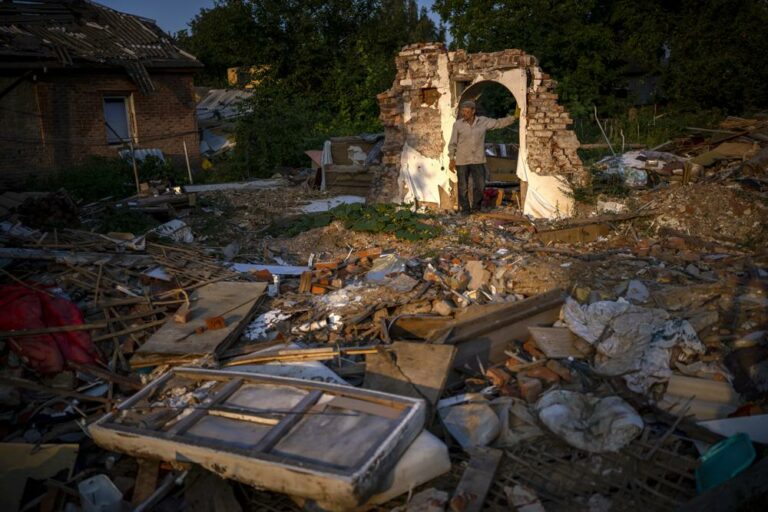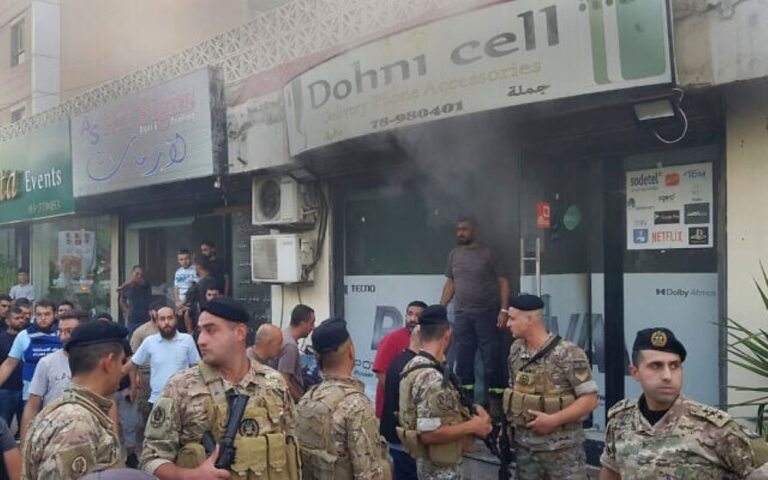A surge in fighting on the southern front line and a Ukrainian claim of new attacks on Russian positions fed speculation Tuesday that a long-expected counteroffensive has started to try to turn the tide of the war.
But Ukrainian officials warned against excessive optimism in a war that has seen similar expectations of changing fortunes before, and the Russian defense ministry claimed an attempt by Ukraine’s troops to launch an offensive had failed and caused heavy casualties.
Even though independent verification of battlefield moves has been extremely tough, the British defense ministry said in an intelligence report that, as of early Monday, “several brigades of the Ukrainian Armed Forces increased the weight of artillery fires in front line sectors across southern Ukraine.”
Attention centered on potential damage Ukraine might have inflicted on Russian positions around the port city of Kherson, a major economic hub close to the Black Sea and one of Moscow’s prized possessions since it started the invasion just over half a year ago.
Ukraine’s presidential office reported Tuesday that “powerful explosions continued during the day and night in the Kherson region. Tough battles are ongoing practically across all” of the strategic area. Ukrainian forces, the report said, have destroyed a number of ammunition depots in the region and all large bridges across the Dnieper that are vital to bring supplies to the Russian troops.
Russian state news agency Tass reported five explosions rocking Kherson on Tuesday morning — blasts likely caused by air defense systems at work.
The Ukrainian military’s Operation Command South also reported destroying a pontoon crossing the Dnieper that the Russian forces were setting up and hitting a dozen command posts in several areas of the Kherson region with artillery fire.
“The most important thing is Ukrainian artillery’s work on the bridges, which the Russian military can no longer use,” Ukrainian independent military analyst Oleh Zhdanov told The Associated Press.
“Even the barges have been destroyed. The Russians can’t sustain forces near Kherson — this is the most important.”
On Monday, the southern command center’s Nataliya Gumenyuik told Ukrainian news outlet Liga.Net that Kyiv’s forces have launched offensive operations “in many directions in our area of responsibility and have breached the enemy’s first line of defense.” The statement quickly made headlines after weeks of reports that Ukraine forces were preparing an offensive there and as Ukrainian attacks on the Kherson region intensified.
Zhdanov said that Russia has three lines of defense in the Kherson region, and breaching the first one signals only “isolated offensive actions by the Ukrainian army.”
The war has ground to a stalemate over the past months with casualties rising and the local population bearing the brunt of suffering during relentless shelling in the east and also in the wider area around the Russian-occupied Zaporizhzhia atomic power plant, which has also been at the heart of fighting in Ukraine.
Amid fears the plant could be damaged, leading to a radioactive leak, a U.N. nuclear watchdog team has arrived in Kyiv and is further preparing a mission to safeguard the Russian-occupied plant from nuclear catastrophe.
The stakes couldn’t be higher for the International Atomic Energy Agency experts, who will visit the plant in a country where the 1986 Chernobyl disaster spewed radiation throughout the region, shocking the world and intensifying a global push away from nuclear energy.
Compounding an already complicated task is the inability of both sides in the war to agree on much beyond allowing the team to go there. Ukraine and Russia have accused each other of shelling the wider region around the nuclear power plant, Europe’s largest, time and again.
Nikopol, which is just across the Dnieper River from the Zaporizhzhia plant, once again came under a barrage of heavy shelling, local authorities said, with a bus station, stores and a children’s library sustaining damage.
And the city of Zaporizhzhia itself, about 50 kilometers (30 miles) away, was targeted by a Russian missile strike, the Ukraine presidential office said.
The dangers of a leak are now so high that officials have begun handing out anti-radiation iodine tablets to nearby residents.
Ukrainian President Volodymyr Zelenskyy reacted to speculation in his nightly video address Monday, about whether his forces had launched a major counteroffensive.
“Anyone want to know what our plans are? You won’t hear specifics from any truly responsible person. Because this is war.”
His adviser, Mykhailo Podolyak, cautioned against “super-sensational announcements” about a counteroffensive.
From the other side, the Moscow-appointed regional leader of Crimea, Sergei Aksyonov, dismissed the Ukrainian assertion of an offensive in the Kherson region as false. He said Ukrainian forces have suffered big losses in the area. And for its part, Russia’s Defense Ministry said its forces had inflicted heavy personnel and military equipment losses on Ukrainian troops.
The Kherson region is just north of the Crimean Peninsula, which Russia annexed from Ukraine in 2014 to set off a conflict that was largely frozen until the Feb. 24 invasion.
Otherwise. the attacks and shelling in the rest of eastern and southern Ukraine continued with the dull beat of death and destruction.
At least nine civilians were killed in more Russian shelling, Ukrainian officials said, from the Black Sea port of Mykolaiv to the northeastern industrial hub of Kharkiv, where five were killed in the city center.
(AP)











